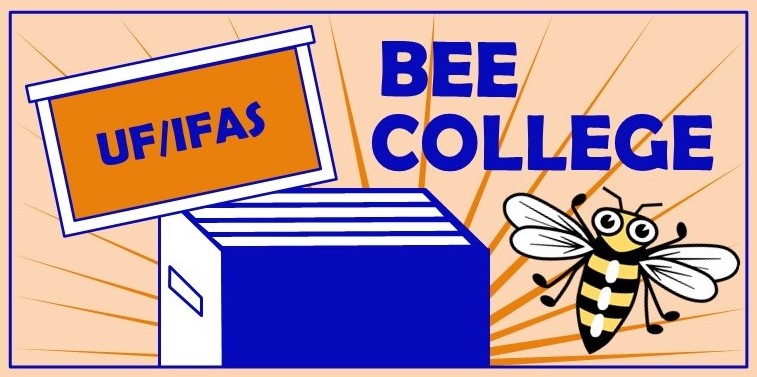by Ray Bodrey | Apr 28, 2022
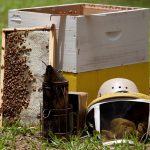 University of Florida IFAS Extension and the Beekeeping in the Panhandle Working Group have once again teamed up to offer the 9th Annual Beekeeping in the Panhandle Conference on Friday May 6th and Saturday May 7th 2022 at the Washington County Ag Center Auditorium.
University of Florida IFAS Extension and the Beekeeping in the Panhandle Working Group have once again teamed up to offer the 9th Annual Beekeeping in the Panhandle Conference on Friday May 6th and Saturday May 7th 2022 at the Washington County Ag Center Auditorium.
This year’s event will feature: Hands-on open hive experiences, presentations on the latest in research-based beekeeping management practices, interaction with expert beekeepers, vendors with beekeeping equipment, and hive products. Door prizes will be available as well!
The registration fee for the event will be $35 for one day or $55 for both days and $15 per day for youth 12 and under.
The activities will take place from 8:00 am – 5:00 pm Central Standard Time each day and will include a catered lunch.
Location: 1424 Jackson Avenue, Chipley, FL
Ways to register:
Registration link: https://www.eventbrite.com/e/9th-annual-beekeeping-in-the-panhandle-conference-trade-show-tickets-269199873067
Or drop by the Washington County Office at 1424 Jackson Avenue in Chipley.
For more information contact Washington County Extension Office at (850) 638-6180.
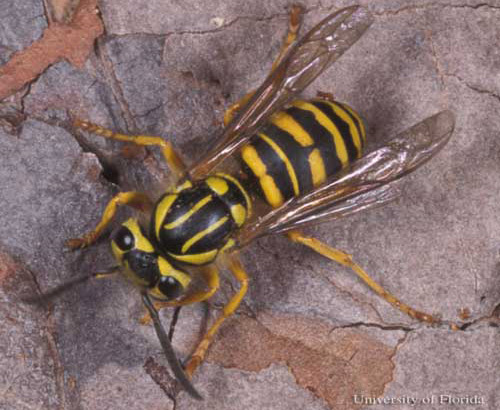
by Matt Lollar | Sep 1, 2021
Last week I was trimming shrubs around my house and I had the wild idea to pull up a couple yaupon holly saplings around the base of a live oak tree…without looking. As I was pulling up one of the saplings I felt a piercing sting on my ankle. I yelled some obscenities and ran away as quickly as I could, but it was no use. By the time I got far enough away, I had been stung eleven times and I still had a few yellowjackets flying around in my shorts.

Southern yellowjackets create underground colonies that can hold over 2,000 yellowjackets. Photo Credit: UF/IFAS
Two species of yellowjackets can be found in Florida along with a similar species known as the baldfaced hornet. The eastern yellowjacket (Vespula maculifrons) is found in eastern North America and the southern yellowjacket (Vespula squamosa) is found in the eastern United States, Mexico, and Central America.
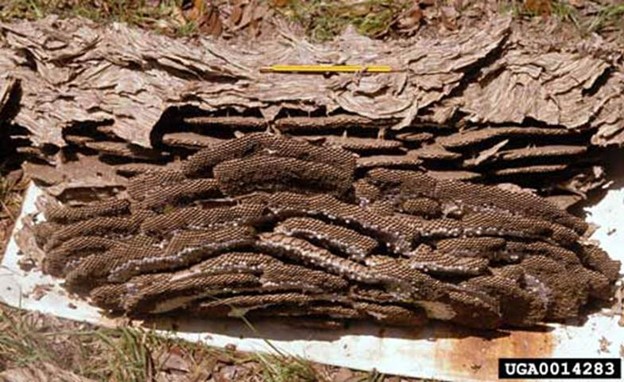
Southern yellowjacket, Vespula squamosa (Drury), nest dug from ground.
Credit: Gerald J. Lenhard; http://www.insectimages.org/
Yellowjacket colonies are started in the spring by a single queen that mated in the fall and overwintered. Yellowjacket nests consist of a series of horizontal combs that may be above ground, underground, or both. The queen builds the initial nest and forages for food on her own. Her offspring then assume all jobs except for laying eggs. In the fall, larger cells are built for a new batch of queens. The new queens then emerge, mate, and seek shelter for the winter. The old queen dies and the remaining colony breaks down.
Yellowjackets aren’t all bad, they provide a great service to our gardens and landscapes by attacking a number of insects that are pests to our crops. However, the moral of this story is to always be aware of what is lurking under your feet and above your head. And maybe yaupon hollies shouldn’t be messed with regardless of their native invasiveness. Nests are less active at night, but any disturbance will trigger an attack. However, it is best to leave nest removal to professionals.
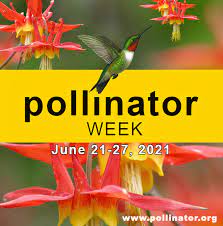
by Sheila Dunning | Jun 10, 2021
Are you one of those that hear the word “pollen” and sneeze? For many, allergies are the only association with plant pollen. But pollination – the transfer of male pollen grains into the female flower organs to create fertile seeds – is an essential part of a healthy ecosystem. Pollinators play a significant role in the production of over 150 food crops. Corn and rice are wind pollinated. Just about everything else, including chocolate, depends on an insect, bird or mammal. Successful pollination of a single flower often requires visits from multiple pollinators. But, there are also plants that need a specific species in order to complete the task. They are so interdependent that if one disappears, so will the other.
Unfortunately, reports from the National Research Council say that the long-term population trends for some North American pollinators are “demonstrably downward”.
 In 2007, the U.S. Senate unanimously approved and designated “National Pollinator Week” to help raise awareness. National Pollinator Week (June 21-27, 2021) is a time to celebrate pollinators and spread the word about what you can do to protect them. Habitat loss for pollinators due to human activity poses an immediate and frequently irreversible threat. Other factors responsible for population decreases include: invasive plant species, broad-spectrum pesticide use, disease, and weather.
In 2007, the U.S. Senate unanimously approved and designated “National Pollinator Week” to help raise awareness. National Pollinator Week (June 21-27, 2021) is a time to celebrate pollinators and spread the word about what you can do to protect them. Habitat loss for pollinators due to human activity poses an immediate and frequently irreversible threat. Other factors responsible for population decreases include: invasive plant species, broad-spectrum pesticide use, disease, and weather.
So what can you do?
- Install “houses” for birds, bats, and bees.
- Avoid toxic, synthetic pesticides and only apply bio-rational products when pollinators aren’t active.
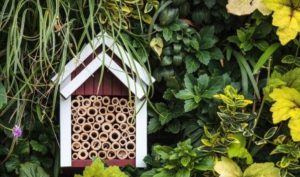
- Provide and maintain small shallow containers of water for wildlife.
- Create a pollinator-friendly garden.
- Plant native plants that provide nectar for pollinating insects.
There’s a new app for the last two.
The Bee Smart® Pollinator Gardener is your comprehensive guide to selecting plants for pollinators based on the geographical and ecological attributes of your location (your ecoregion) just by entering your zip code. http://pollinator.beefriendlyfarmer.org/beesmartapp.htm
Filter your plants by what pollinators you want to attract, light and soil requirements, bloom color, and plant type. This is an excellent plant reference to attract bees, butterflies, hummingbirds, beetles, bats, and other pollinators to the garden, farm, school and every landscape.
The University of Florida also provides a website to learn the bee species and garden design. Go to: https://ffl.ifas.ufl.edu/bees/Bee
or go on-line to see a list of pollinator-attracting plants. https://gardeningsolutions.ifas.ufl.edu/design/gardening-with-wildlife/bee-plants.html
Not only can you find out which plants attract pollinators, you will be given the correct growing conditions so you can choose ‘the right plant for the right place’.
Remember, one out of every three mouthfuls of food we eat is made possible by pollinators.
by Shep Eubanks | Mar 31, 2015

Photo 1 Large Carpenter Bee – Photo by Shep Eubanks
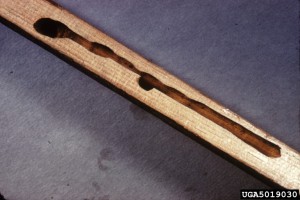
Photo 2 Carpenter Bee Gallery – photo courtesy of bugwood.org
Every year beginning in mid-March to early-April, Extension Agents begin to receive inquiries about managing carpenter bees which are attacking barns, eaves, rafters, and other wooden structures. The bee most commonly responsible for economic damages is typically the large Carpenter bee (see Photo 1)
This is when nesting takes place in structural timbers, fence posts, wooden water tanks, or the like (see Photo 2). Chandler (1958) lists four types of damage done by carpenter bees: weakening of structural timbers,
gallery excavation in wooden water tanks (especially in arid western areas), defecation streaking on houses (see Photo 3) or painted structures, and human annoyance. The last point is included since carpenter bee females may sting (rarely), and male bees may hover or dart at humans who venture into the nesting area.
In general, carpenter bees are a minor problem. Carpenter bees rarely attack painted or varnished wood, while natural wood is more attractive. If there is a problem with carpenter bees, apply a finish to the wood.
These bees often cause problems on structures by boring into the wood surface which is the back face of the trim under the eaves since this surface is usually not painted. A buzzing or drilling sound is heard when the bee is boring into the wood.
If the hole is not visible, often the case when the bee is boring into the backside of trim, look for sawdust on the ground under the hole.
Unpainted, exposed wood is especially attractive to carpenter bees. The most effective deterrent to carpenter bee activities is a painted (oil base or polyurethane) surface.
Insecticide additive paints are available which may repel bees attempting to nest. Wood stains provide little repelling action. Nail holes or exposed saw cuts should be filled in with wood putty or dowels and painted.
If practical, remove severely damaged wood and replace with chemical pressure-treated wood to deter nest construction. To further discourage carpenter bees looking for potential nesting sites, a homeowner should secure all doors, windows, and other building openings during the spring. Non-wood surfaces such as vinyl siding are not damaged by carpenter bees.
A very effective, low cost trap can be constructed from scrap plywood, several of 16 ounce plastic water bottles, a few wood screws, a piece of wire, and a little bit of electrical tape as seen in Photos 4,5, and 6 below. A hole approximately 1/2 inch in diameter works very well. Three or four of these traps positioned at the corners of a building or strategically within a structure can greatly reduce bee numbers with minimal insecticide, structural painting, or other practices. In Photo 4, the trap has only been in place for 5 days. Use of insecticides remains an option.
For more information, contact your local Extension Agent or check out this publication :
Large Carpenter Bees, Xylocopa spp. (Insecta: Hymenoptera: Apidae: Xylocopinae)
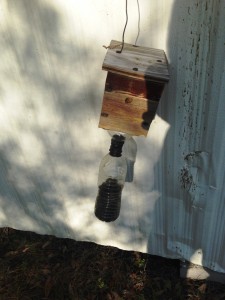
Photo 4 Trap Full of Bees – photo by Shep Eubanks
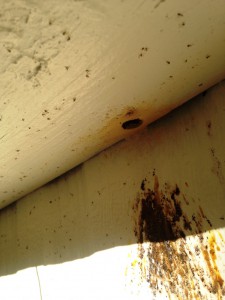
Photo 3 Typical Boring and Defecation Damage – photo by Shep Eubanks
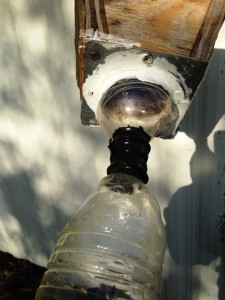
Photo 5 Close up of Trap Construction – photo by Shep Eubanks
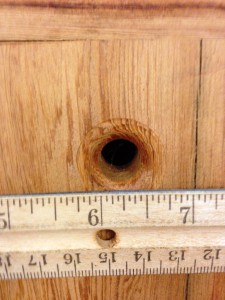
Photo 6 Hole Size of 1/2 inch – photo by Shep Eubanks
 University of Florida IFAS Extension and the Beekeeping in the Panhandle Working Group have once again teamed up to offer the 9th Annual Beekeeping in the Panhandle Conference on Friday May 6th and Saturday May 7th 2022 at the Washington County Ag Center Auditorium.
University of Florida IFAS Extension and the Beekeeping in the Panhandle Working Group have once again teamed up to offer the 9th Annual Beekeeping in the Panhandle Conference on Friday May 6th and Saturday May 7th 2022 at the Washington County Ag Center Auditorium.




